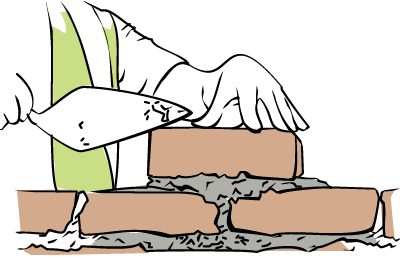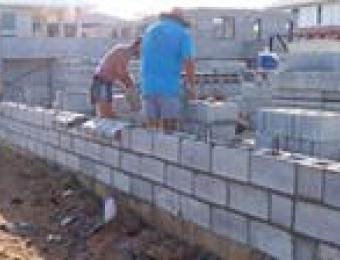
What is mortar?
Mortar is used in home building and decoration to glue things together. It can also assist in creating a tight building envelope. Originally made from just mud or clay, stronger and more waterproof mortars are now available, made from ingredients which might include lime, sand, gypsum, concrete, bitumen, resin or latex. Mortar can be bought pre-prepared or the dry ingredients can be combined with water to form a paste. The paste is applied to building materials such as bricks, tiles or stones, after which it sets into a hard, solid adhesive.
Why is mortar used?
In masonry, mortar is used to help keep walls upright. It compensates for differences in size between bricks and stones, and helps keep a wall straight and solid. This stability allows a wall to be load bearing, which means that it carries and distributes weight from the roof to the foundation. Because mortar creates a seal in between building materials, it helps to create a tight building envelope on exteriors - one that does not admit wind or moisture. In other uses outside the home, mortar might help in making retaining walls and barbecues and their enclosures. It can also be used to help brick and stone garden pathways maintain their shape. Indoors, mortar is used to stick tiles to floors or plasterboard walls. Mortar might also be found on and around fireplaces, in chimneys, between glass bricks and in interior brick walls.
How is mortar applied?
If necessary, water is added to the powdered mortar ingredients to form a thick paste. Using a trowel, the paste is spread onto the material you are fixing into place (brick, tile, stone etc), which is then positioned as you wish. There are many kinds of mortar, so be sure to select the type that has been specifically composed for your needs. Mortar can be tinted to match your bricks, stones and tiles.
Is mortar easy to maintain?
Mortar characteristically shrinks with age and expands and contracts with thermal energy, however it can also be quite brittle. This combination of features often results in mortar cracking, crumbling and breaking over time. Some mortars are likely to last longer than others. How long your mortar lasts will depend on what it is made of and where it is situated. For example, latex mortar in a dry environment will last far longer than a lime mortar exposed to water and weather. Mortar is relatively easy to replace however, and should be checked once or twice a year for any necessary repairs.
|
Advantages
|
Disadvantages
|





